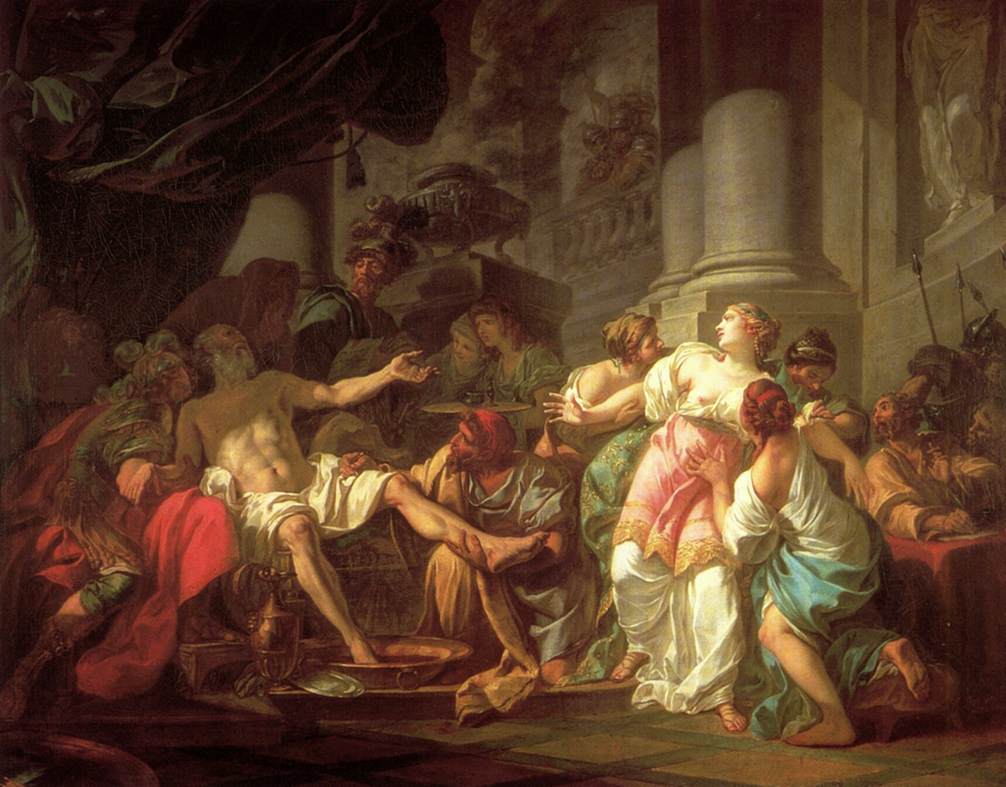Description
The Death of Seneca, a painting by Jacques-Louis David, is a masterpiece of neoclassical art that depicts the tragic end of the Roman philosopher Seneca. The painting is a vivid representation of the classical ideals of reason, virtue, and stoicism, which were highly valued by the artist and his contemporaries.
The composition of the painting is striking, with Seneca sitting calmly in the foreground, surrounded by his distracted followers. The use of light and shadow creates a dramatic effect, emphasizing the emotional intensity of the scene. The color palette is subdued, with shades of brown, grey, and black dominating the painting, adding to the somber mood of the scene.
The painting has a fascinating history, as it was commissioned by Napoleon Bonaparte in 1795 as a symbol of his commitment to the ideals of the French Revolution. However, the painting was never displayed in public during Napoleon's reign, as it was deemed too politically sensitive. It was only after Napoleon's downfall that the painting was finally exhibited in the Louvre Museum.
One interesting aspect of the painting is the symbolism that David incorporated into the composition. For example, the broken column in the background is a symbol of Seneca's stoic philosophy, which emphasizes the importance of endurance in the face of adversity. Additionally, the figure of Nero, who ordered Seneca's death, is depicted in the background as a shadowy figure, symbolizing the corrupt and oppressive nature of the Roman Empire.
Overall, The Death of Seneca is a powerful and thought-provoking work of art that showcases David's mastery of neoclassical style and his ability to convey complex emotions through his paintings. Its historical significance and rich symbolism make it a fascinating piece of art that continues to captivate viewers to this day.

